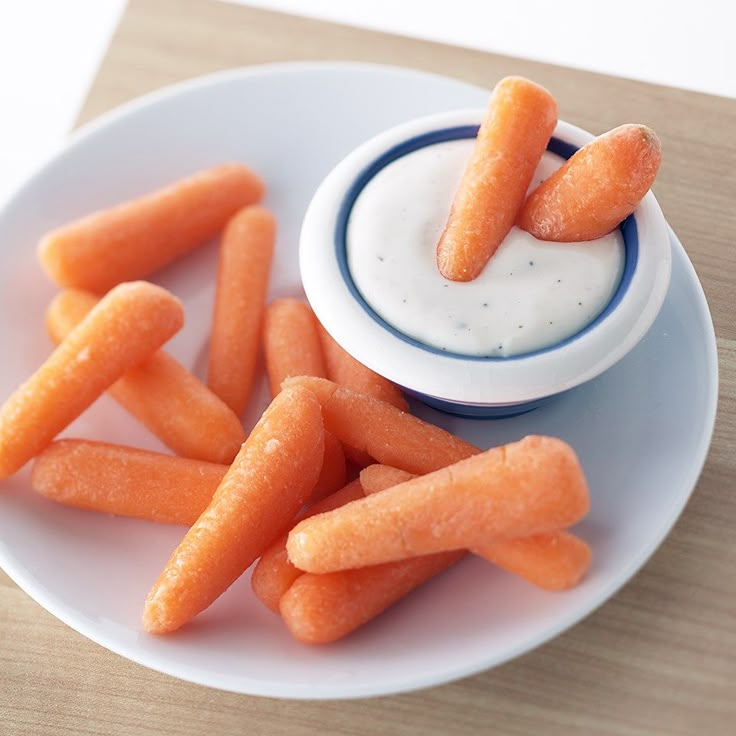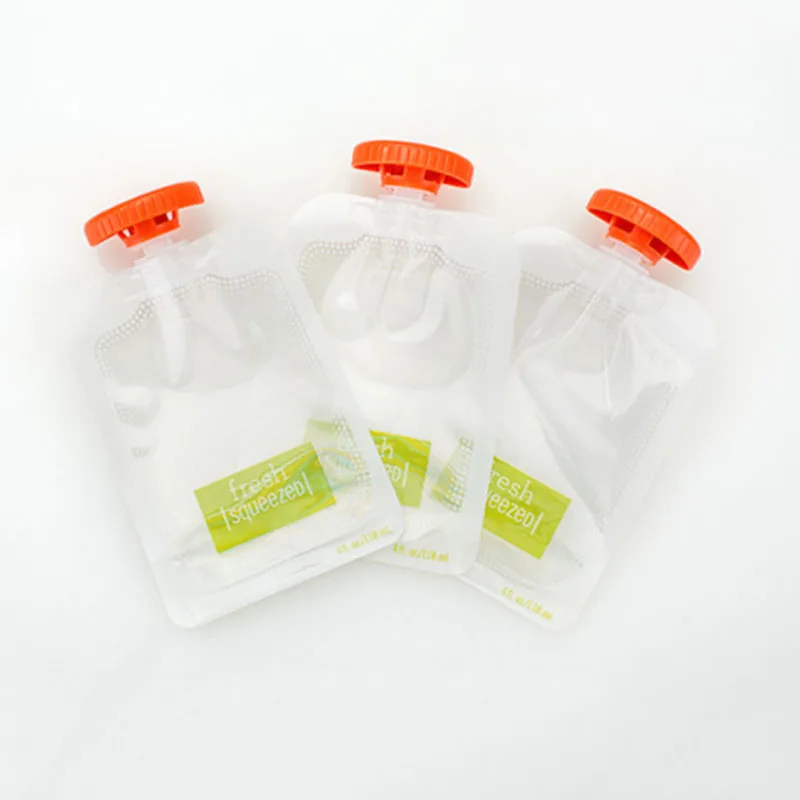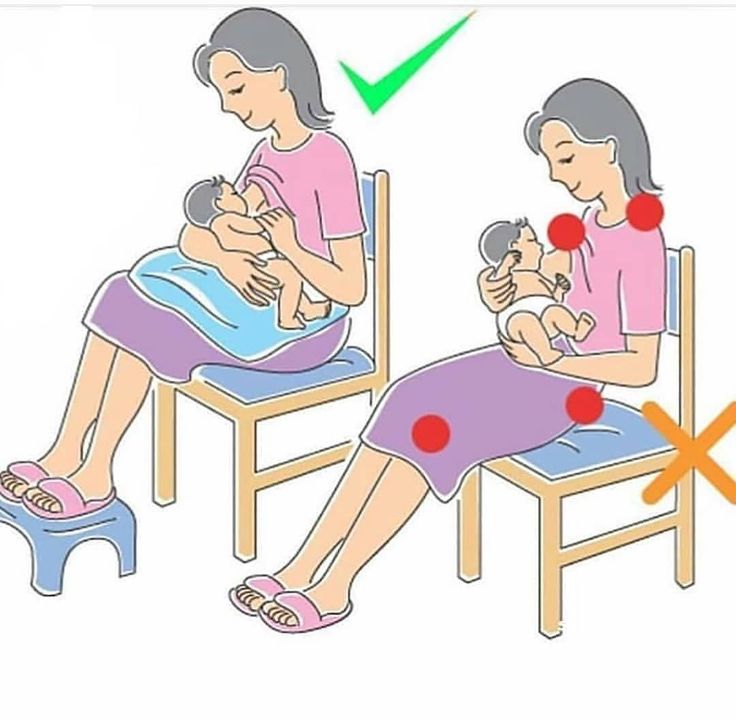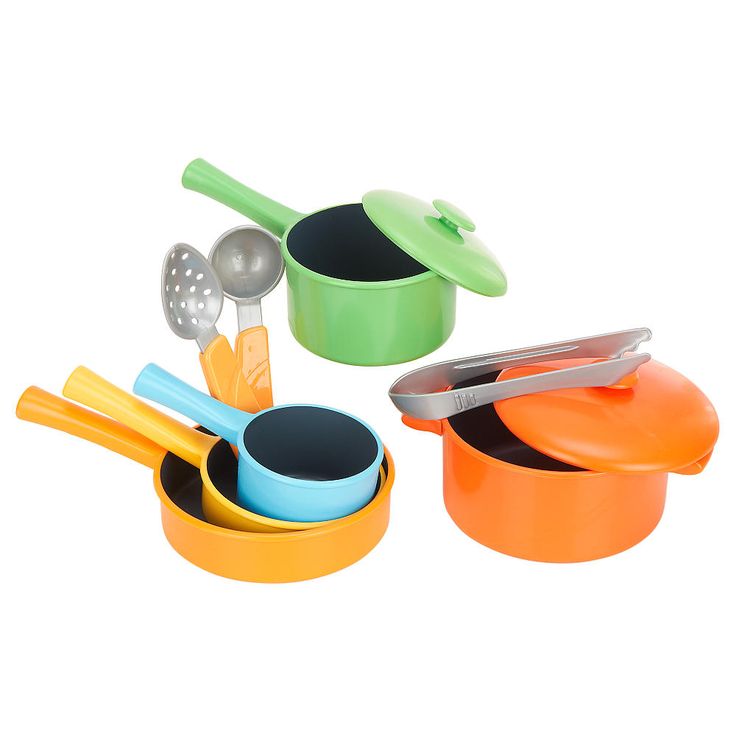Food safety guidelines to implement when feeding babies
Food safety for babies and toddlers
Read time: 3 minutes
What to know about feeding your baby and toddler safelyImportance of food safety for babies and toddlers
Preventing foodborne illness
Other food safety considerations
Babies and toddlers are particularly vulnerable to foodborne illness because their immune systems are not yet fully developed.1 Because of this, it can be harder for your baby to fight off an infection and it may even take them longer to get well. To help reduce their risk of getting sick, it is imperative to follow proper food safety techniques.
Read on to learn the best food safety practices to help keep your baby and toddler safe while eating.
Helping prevent foodborne illnessThere are many ways to help prevent foodborne illness in babies and toddlers including:
Good hygiene: Hand washing, as well as adequate washing of all utensils and surfaces, is the most effective measure you can take in preventing foodborne illness in your baby or toddler. 1
This includes proper cleaning and sterilization of bottles, sippy cups, breast pump parts, and other baby feeding supplies.
Avoiding higher-risk foods: Certain foods are more susceptible to bacterial growth and should not be given to your child. These include:
Unpasteurized dairy products, including milk and cheese
Raw and undercooked eggs and foods containing raw or undercooked eggs
Raw and undercooked meat and poultry
Raw and undercooked fish and shellfish
Unpasteurized juices (unless freshly squeezed yourself)
Raw sprouts
Honey: do not give to children less than 12 months old due to the risk of botulism, a foodborne illness2,3,4
Appropriate handing and storing of breastmilk and formula. Proper handling, storage and reheating of breastmilk, as well as proper handling and preparation of formula are critical to help prevent bacterial growth.5,6,7
Proper handling, storage and reheating of breastmilk, as well as proper handling and preparation of formula are critical to help prevent bacterial growth.5,6,7
Read more:
Safe Storage of Pumped Breastmilk
Everything You Need to Know about How to Prepare and Store Infant Formula
Other Food Safety ConsiderationsChoking: Babies and toddlers are at an increased risk of choking, so it’s important to provide age-appropriate textures and suitably sized foods.8
Depending on what stage of eating your child is at, make sure that any food you provide is either pureed, mashed, or a pea-sized (or thin strip) soft solid that is ‘smushable’ between your fingers.9 Once your toddler gets a little older and better at chewing and swallowing, firmer textures may be handled.
Learn about:
Preventing Choking in Infants and Toddlers
Introducing Solids: First Foods and Textures
Mercury: Fish is a great source of lean protein, and many fattier fish also have beneficial omega-3 fatty acids. However, certain types of seafood have a high mercury content, which may affect your child’s developing nervous system.10
Higher mercury fish include: Canned albacore tuna, bigeye tuna, swordfish, King mackerel, shark, and tilefish.11
Lower mercury fish include: Salmon, cod, anchovy, sardines, haddock, scallop, freshwater trout, canned chunk light tuna, pollock, tilapia, and catfish.11
For families who eat meat, the US Food and Drug Administration recommends eating low mercury fish 2 to 3 times per week as part of a balanced diet. For more information on mercury in seafood, please see these FDA recommended guidelines.11
Tips on safely feeding your infant and toddlerCook foods thoroughlyCook foods, such as meats, poultry, and fish, to recommended internal temperatures to ensure harmful bacteria are killed.
Safe minimum cooking temperatures:
Cuts of beef, pork, veal, and lamb: 145 degrees
Ground meats: 160 degrees
Poultry: 165 degrees
Fish and shellfish: 145 degrees12
Learn about: How Can I Make my own Pureed Baby Food?
Don’t “double dip”Feeding your baby straight from the jar can introduce bacteria from your baby’s mouth from the spoon into the food. Instead, spoon a small amount into a bowl and feed your baby from there. Throw out any food from the bowl that your baby did not eat.3
If using a pouch, squeeze the amount you’d like to feed your baby into a bowl, or squeeze a small amount onto a spoon. Feed from the bowl or spoon, making sure not to touch the tip of the pouch spout to the spoon, which would introduce bacteria to the pouch.
You can place whatever is left in the jar or pouch (that did not come into contact with your baby’s saliva) back in the refrigerator for later use. 3 Most manufacturers say these leftovers can be kept for 1 to 2 days in the refrigerator before needing to be thrown out.
3 Most manufacturers say these leftovers can be kept for 1 to 2 days in the refrigerator before needing to be thrown out.
Read more: How to Store Baby Food
Timing is keyBe familiar with the recommended “safe times” for opened jarred and pouch baby food:
Opened, strained fruits or veggies: 2 to 3 days
Strained meats and eggs: 1 day
Veggie and meat combinations: 1 to 2 days
Homemade baby foods: 1 to 2 days1
Be sure to wash bottles, sippy cups, feeding utensils, breast pump parts and other feeding supplies in hot, soapy water then rinse thoroughly.
Learn about: How to Properly Clean your Breast Pump
Follow proper handling and preparation of infant formulaMix formula with safe water source
Prepared formula must be discarded within 1 hour after feeding your baby
Prepared formula that has not been given to baby can be stored in the refrigerator for up to 24 hours
An open container of ready to feed or concentrated formula should be covered, refrigerated, and discarded after 48 hours if not used
Read more:
Formula Preparation: What Type of Water Should I Use?
Everything You Need to Know About How to Prepare and Store Infant Formula
Help prevent chokingTake these precautions to minimize the risk of your child choking:
Foods that pose a risk of choking should be avoided.
 Examples include nuts, whole grapes, hot dogs, raw carrots, raisins, popcorn, and portions of food that are too large.
Examples include nuts, whole grapes, hot dogs, raw carrots, raisins, popcorn, and portions of food that are too large.Stay close to your baby during meals to make sure they are tolerating foods appropriately
Make sure your baby or toddler is in a designated feeding chair like a highchair or booster seat
Allow baby to eat at their own, comfortable pace8,13
If you can’t remember whether the leftovers are from two days ago or last week, throw it out.
Let's Chat!We know parenting often means sleepless nights, stressful days, and countless questions and confusion, and we want to support you in your feeding journey and beyond.
Our Happy Baby Experts are a team of lactation consultants and registered dietitians certified in infant and maternal nutrition – and they’re all moms, too, which means they’ve been there and seen that. They’re here to help on our free, live chat platform Monday - Friday 8am - 6pm (ET), and Saturday - Sunday 8am - 2pm (ET). Chat Now!
They’re here to help on our free, live chat platform Monday - Friday 8am - 6pm (ET), and Saturday - Sunday 8am - 2pm (ET). Chat Now!
Read more about the experts that help write our content!
For more on this topic, check out the following articles:How to Choose the Right Breast Pump
How much Formula does my Baby Need?
What to Know about Traveling with Infant Formula
Sources
foodsafety.asn.au Infants and young children
Infants and young children under five years old are especially vulnerable to foodborne illness because their immune systems are not fully developed. Their stomachs also produce less acid making it easier for harmful germs to cause harm in their bodies.
There is detailed advice on infant and young children feeding on the National Health and Medical Research Council’s (NHMRC) website
Foods to avoid
The following foods should not be fed to young children because of their potential to cause serious foodborne illness:
- Raw or undercooked meat (particularly minced meat), poultry, fish and shellfish
- Raw seed sprouts—such as alfalfa, clover and radish
- Uncooked fermented meats, such as salami—check the label: ‘heat treated’ or ‘cooked’ products are safe.
 Do not feed young children products labelled ‘not heat treated’
Do not feed young children products labelled ‘not heat treated’ - Unpasteurised milk and products made from unpasteurised milk—such as raw-milk, cheese and other dairy foods made from unpasteurised milk
- Unpasteurised fruit juices – except if you have freshly squeezed them yourself.
- Only buy such products from established reputable suppliers or squeeze the juice yourself. To determine if a juice is pasteurised, check the label or contact the manufacturer. All commercially freshly squeezed juices are unpasteurised.
- Honey do not feed honey to infants aged under 12 months because of the risk of botulism
- Raw eggs to prevent salmonella poisoning, cook all eggs thoroughly (i.e. until the white is completely set and yolk begins to thicken) and do not use uncooked products containing raw eggs such as home-made ice cream or mayonnaise.
- Hard, small, round and/or sticky solid foods are not recommended because they can cause choking and aspiration.
The NHMRC also recommends that infants and toddlers are always supervised during feeding and you should avoid feeding an infant using a ‘propped’ bottle which can increase the risk of choking, dental caries and ear infections.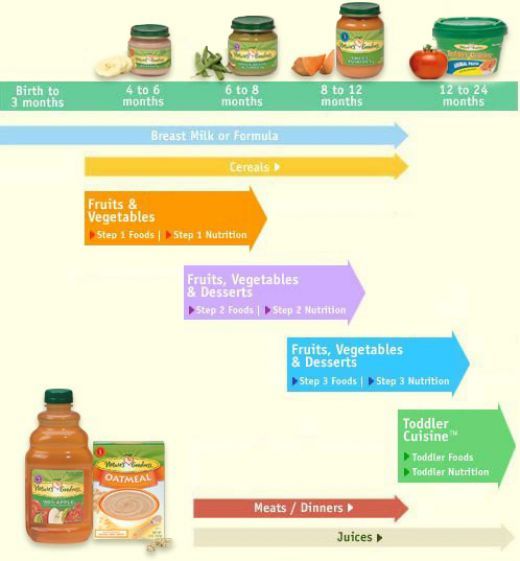
Good hygiene
Before you prepare food wash your hands, rinse and dry them thoroughly. Make sure the food preparation area chopping board and utensils have been washed with hot soapy water and well rinsed and dried before use. Check out how to wash your hands properly.
Also start teaching your child good hygiene as soon as possible. Teach children to wash and dry hands before touching or eating food; after touching chicken or raw meat; after using the toilet; after blowing their nose and after playing with a pet. Teach children not to pick up food from the floor and eat it.
If you have gastro
If you have gastroenteritis, you don’t want to pass it on to the baby so, if possible, don’t prepare any solid food or formula yourself. Ask someone else to help or use commercially produced solid food in can or jar. Ask someone else to do the actual feeding if possible. Continuing to breastfeed is fine.
Sterilising bottles and equipment
All equipment, including bottles or cups, used to feed the baby must be sterilised before use, particularly in the first three months. Sterilising equipment and tablets for making sterilising solution are widely available and effective, provided manufacturers’ instructions are followed carefully. Sterilising solutions can be used for 24 hours before being changed. Equipment can also be sterilised by boiling it in water for five minutes.
Sterilising equipment and tablets for making sterilising solution are widely available and effective, provided manufacturers’ instructions are followed carefully. Sterilising solutions can be used for 24 hours before being changed. Equipment can also be sterilised by boiling it in water for five minutes.
All pieces of breast pumps should be washed with warm water and a mild detergent. If the pump has clear plastic tubing connected to an electric motor, check the manufacturer’s guidelines for washing and sterilising the tubing. Most such tubing needs to be washed and sterilised only if breast milk has accidentally been drawn up into it. The outside of the tubing should be wiped with a clean, moist cloth then dried with a towel or allowed to air dry.
Breast milk
Breastfeeding is strongly recommended where possible as it is has benefits for both mother and baby. Here are some tips if you express breast milk:
- milk can be expressed and placed in a sterile container with a lid
- expressed milk can be stored in a fridge for up to 48 hours
- frozen breast milk can be stored in a freezer for up to three months
each time milk is expressed it should be stored in a different cleaned container, rather than being added to already stored expressed milk - frozen milk should be thawed in the refrigerator or placed in its container in warm water and gradually heated until thawed.
 Leave the milk in the warm water only until it is thawed.
Leave the milk in the warm water only until it is thawed. - heat the milk gradually to warm it by placing the bottle or other container of milk in hot water. Avoid overheating the milk as this can affect the immunological properties
- test the temperature of the milk before feeding the baby. Microwave ovens can cause variations in temperature throughout the milk. When testing the milk the temperature may feel correct, but the core may be sufficiently hot to scald the baby
- any partially consumed milk should be discarded.
If you use a breast pump follow its cleaning instructions to make sure the equipment is kept clean and safe.
Infant formula
Always check the date mark on the label and follow the instructions on the infant formula packaging for storage and preperation. Powdered formula should be prepared fresh each day. It can be stored in the fridge for a maximum of 24 hours.
Baby bottles containing formula or milk should be stored in the fridge and warmed up immediately before use by placing the bottle of milk in hot water. Heating the milk in a microwave oven can cause variations in temperature throughout the milk and burn young mouths. Test the temperature of the milk before feeding the baby. Any partially consumed milk or formula should be discarded immediately.
Heating the milk in a microwave oven can cause variations in temperature throughout the milk and burn young mouths. Test the temperature of the milk before feeding the baby. Any partially consumed milk or formula should be discarded immediately.
Solid food
Commercially prepared food
Read the labels carefully on commercially prepared food and follow any preparation or storage instructions and check the date marking on the labels. Listen for a popping sound when opening vacuum-sealed jars as this shows that the jar’s seal was intact and check pouch seals are intact. This is particularly important with commercial baby foods; if the jar fails to pop when opened or a screw cap or seam on a pouch are not intact, do not use the food. Swollen or leaking cans, pouches or jars indicate that harmful bacteria may have grown and their contents should not be eaten.
All commercially prepared foods, once opened, should be stored in the fridge, preferably not in the can id=f a canned product. Throw out the contents of any product if there is an unusual odour. Remove the amount of food to be fed immediately to a separate dish rather than feeding directly from the container, can or jar using a spoon or squeeze food in pouches onto a spoon or into a dish for the child to eat. This way, unused food from the container, can (transfer cans to a clean container), pouch or in a jar can be covered or recapped and refrigerated for later use without the risk of contamination. If you choose to allow the child to suck the contents from a pouch, do not recap and store a pack the child has had in their mouth. Throw out any unused food left in a serving dish and use a fresh clean spoon for every feed.
Throw out the contents of any product if there is an unusual odour. Remove the amount of food to be fed immediately to a separate dish rather than feeding directly from the container, can or jar using a spoon or squeeze food in pouches onto a spoon or into a dish for the child to eat. This way, unused food from the container, can (transfer cans to a clean container), pouch or in a jar can be covered or recapped and refrigerated for later use without the risk of contamination. If you choose to allow the child to suck the contents from a pouch, do not recap and store a pack the child has had in their mouth. Throw out any unused food left in a serving dish and use a fresh clean spoon for every feed.
When transporting food for feeding your baby outside the home, keep any opened jars or pouches that need to be refrigerated, chilled by using ice packs. If using chilled or frozen commercial infant foods, only purchase such foods from established, reputable suppliers and that are within their use by dates and are appropriately stored in fridges and freezers. If home delivered, make sure you are home to receive the delivery, ensure it is chilled or frozen and within its use by date, and place in the refrigerator or freezer immediately. If you’ve bought chilled or frozen baby food at the supermarket, refrigerate/freeze as soon as you arrive home. Allowing the temperature of such foods to rise into the temperature danger zone for extended periods can allow harmful bacteria to grow.
If home delivered, make sure you are home to receive the delivery, ensure it is chilled or frozen and within its use by date, and place in the refrigerator or freezer immediately. If you’ve bought chilled or frozen baby food at the supermarket, refrigerate/freeze as soon as you arrive home. Allowing the temperature of such foods to rise into the temperature danger zone for extended periods can allow harmful bacteria to grow.
Home prepared food
All general rules for safe food handling are especially vital when cooking for a young child so keep hot food steaming hot, keep cold food refrigerated, cook food properly, separate raw and ready to eat food, keep kitchen and utensils clean and wash hands with soap, rinse and dry thoroughly. Make sure you follow these Food safety tips to clean, cook, chill and separate.
If preparing food in bulk, cool it quickly by refrigerating. Don’t keep it in the fridge for more than about three days. When you make pureed vegetables or soup for your baby, you can make enough for several meals. Use a covered ice-cube tray to freeze small quantities which you can defrost one cube at a time for a single serving.
Use a covered ice-cube tray to freeze small quantities which you can defrost one cube at a time for a single serving.
As with commercially produced baby food, keep home prepared food chilled by using an ice pack when transporting for feeding outside the home. Ensure any container, spoon etc is washed thoroughly with hot soapy water, rinsed well and thoroughly dried between one use and the next.
Fill food container with just enough food for one serving. Harmful germs from a baby’s mouth can be introduced into food or bottle where it can grow and multiply even after refrigerating and reheating. Throw away any leftovers. Do not feed any later meals from the same container or spoon.
Packed food for child care centre
Food can safely be made ahead of time (the previous night) provided it is then kept in the fridge. Ensure food preparation surfaces, hands and utensils are clean when preparing and packing the food. Wash all fruits and vegetables thoroughly. Food should be kept cool.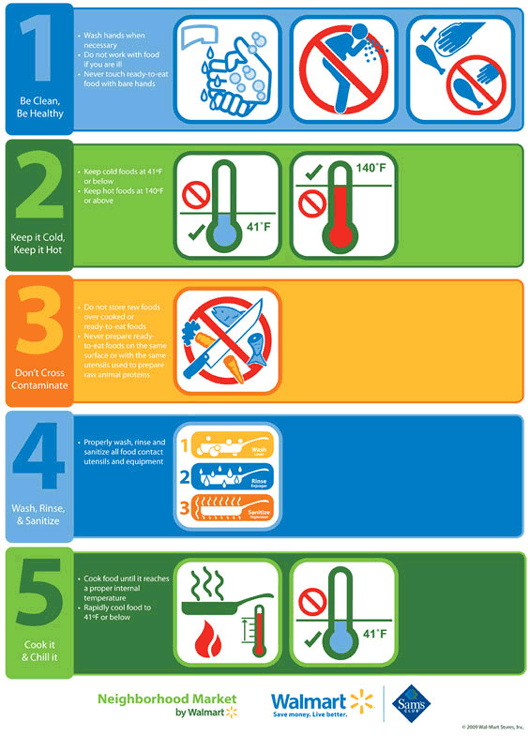 Pack something cold such as a frozen drink or ice pack with the food. Pack perishable foods such as cold meats, chicken or egg sandwiches between the frozen items. Child care centres usually refrigerate food, especially for very young children. Placing food in an insulated bag into a day care refrigerator is not likely to add additional benefit over a couple of hours until morning tea or lunch and could take up valuable refrigerator space. Ask your older pre-school children to keep their lunch box away from heat sources such as direct sunlight or room radiators. Throw out any leftovers they may bring home. Warn children against sharing drink bottles.
Pack something cold such as a frozen drink or ice pack with the food. Pack perishable foods such as cold meats, chicken or egg sandwiches between the frozen items. Child care centres usually refrigerate food, especially for very young children. Placing food in an insulated bag into a day care refrigerator is not likely to add additional benefit over a couple of hours until morning tea or lunch and could take up valuable refrigerator space. Ask your older pre-school children to keep their lunch box away from heat sources such as direct sunlight or room radiators. Throw out any leftovers they may bring home. Warn children against sharing drink bottles.
Nutrition
Dear parents!
Rational nutrition of children is a necessary condition for ensuring health, resistance to infections and other adverse factors, the ability to learn and work in all age periods.
In this regard, the organization of food rations during the educational and educational process is one of the important factors in preventing diseases and maintaining the health of children, and ensuring full and safe nutrition of preschool children is a priority in the implementation of state sanitary and epidemiological surveillance.
According to the Decree of the Chief State Sanitary Doctor of the Russian Federation No. 26 dated May 15, 2013, sanitary and epidemiological rules and regulations (hereinafter referred to as sanitary rules) SanPiN 2.4.1.3049-13 “Sanitary and epidemiological requirements for arrangement, content and organization of the working regime in preschool organizations” , aimed at protecting the health of children in the implementation of activities for their upbringing, training, development and rehabilitation in preschool organizations, regardless of their type, organizational and legal forms and forms of ownership. These sanitary rules establish sanitary and epidemiological requirements both for catering in kindergarten and for compiling a menu for catering for children of different ages:
- Requirements for catering equipment, inventory, utensils.
- Requirements for the conditions of storage, preparation and sale of food products and culinary products.
- Requirements for compiling a menu for catering for children of different ages.
- Requirements for the transportation and acceptance of food products into preschool organizations.
For catering in the kindergarten there are functional premises: a catering unit, a food warehouse.
Control over the organization of food in the DOU
Pupils of the MBDOU "Kindergarten No. 92" is carried out in accordance with documents regulating the organization of food in municipal preschool educational institutions 9000 9000 9000 SanPiN 2.4.1.3049- 13
- Food products that are not allowed to be used in the diet of children (Appendix No. 9 to SanPiN 2.4.1.3049-13)
- Recommended daily food packages for children's nutrition in preschool educational institutions (Appendix No.
 10 to SanPiN 2.4.1.3049-13)
10 to SanPiN 2.4.1.3049-13) - Recommended assortment of basic food products for use in the nutrition of children in preschool organizations (Appendix No. 11 to SanPiN 2.4.1.3049-13)
The device and equipment of the catering unit comply with the sanitary rules and regulations for the organization of children's public catering. The catering unit is equipped with the necessary technological and refrigeration equipment in working order. Technological equipment, inventory, utensils, containers are made of materials approved for contact with food products. All kitchen utensils and cookware are labeled for raw and cooked foods. During the operation of technological equipment, the possibility of contact between food raw materials and ready-to-eat products is excluded. Production equipment, cutting equipment and utensils meet the following requirements:
- all-metal tables intended for food processing;
- Separate cutting tables, knives and hardwood boards are available for cutting raw and prepared foods. Cutting boards made of plastic and pressed plywood are not allowed;
Cutting boards made of plastic and pressed plywood are not allowed;
- boards and knives are marked: "SM" - raw meat, "SK" - raw chickens, "SR" - raw fish, "SO" - raw vegetables, "VM" - boiled meat, "VR" - boiled fish, "VO" - boiled vegetables, "gastronomy", "Herring", "X" - bread, "Greens";
- utensils used for cooking and storing food that are safe for children's health;
- compotes and jelly are prepared in stainless steel dishes. Separate dishes are allocated for boiling milk;
- the number of tableware and cutlery used at the same time corresponds to the list of children in the group. For staff there is a separate tableware. Dishes are stored in the buffet.
The catering unit is equipped with a supply and exhaust ventilation system Cleaning is carried out daily in the premises of the catering unit: mopping, dust removal, wiping radiators, window sills; weekly, with the use of detergents, washing of walls, lighting fittings, cleaning of glasses from dust and soot, etc.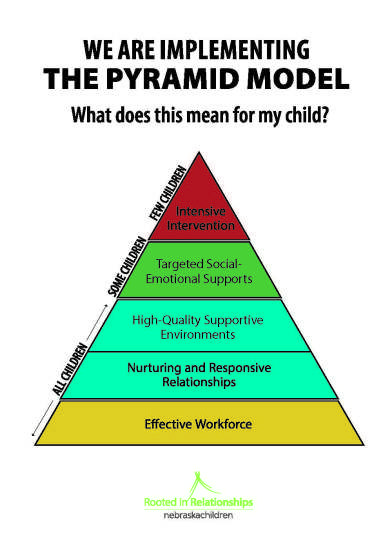 is carried out. Once a month, general cleaning is carried out, followed by disinfection of all premises, equipment and inventory.
is carried out. Once a month, general cleaning is carried out, followed by disinfection of all premises, equipment and inventory.
Food products arrive at the kindergarten at food warehouse and have documents confirming their origin, quality and safety. The quality of the products is checked by the storekeeper - the person in charge carries out the rejection of raw products, makes an entry in a special journal. Food products without accompanying documents, with expired shelf life and signs of spoilage are not allowed to be accepted. Particularly perishable foodstuffs are stored in a refrigerating chamber, in which there are special delimited shelves for storing meat and fish. Dairy products are stored in a separate refrigerator. Butter is stored on shelves in factory containers. Rye and wheat bread are stored separately in a cupboard at the catering unit. Potatoes and root vegetables are stored in a dry, dark room.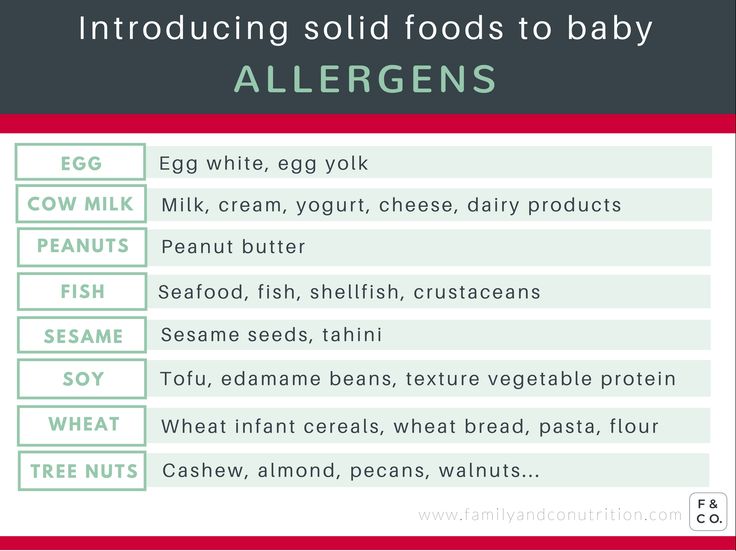
When cooking , the following rules are observed:
- processing of raw and cooked products is carried out on different tables using appropriate marked cutting boards and knives;
- there are 2 meat grinders in the catering department for separate preparation of raw and prepared foods.
Children's nutrition follows the principles of gentle nutrition, which involves the use of certain methods of cooking, such as boiling, steaming, stewing, baking, and avoiding fried foods, as well as products with irritating properties. From the moment of preparation to the holiday, the first and second courses can be on a hot stove for no more than 2 hours.
When processing vegetables , the following requirements are observed:
- Vegetables are sorted, washed and cleaned.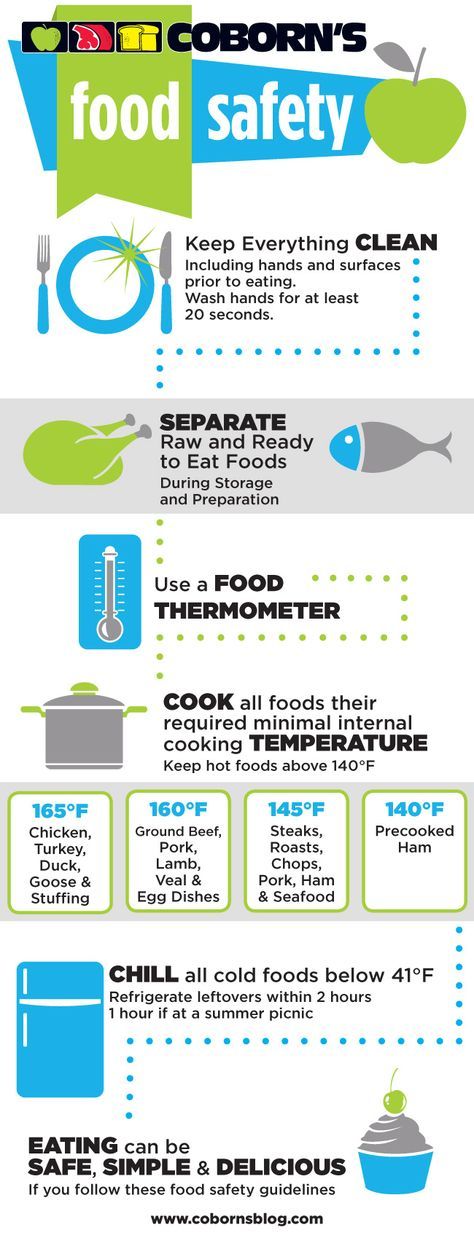 Peeled vegetables are washed again in running drinking water for at least 5 minutes in small batches, using colanders, nets.
Peeled vegetables are washed again in running drinking water for at least 5 minutes in small batches, using colanders, nets.
- Do not pre-soak vegetables.
- Peeled potatoes, root crops and other vegetables may be stored in cold water for no more than 2 hours in order to avoid their darkening and drying.
- Vegetables harvested last year (cabbage, onions, root crops, etc.) in the period after March 1 may be used only after heat treatment.
- Vegetables intended for the preparation of vinaigrettes and salads, boiled in their skins, cooled; peel and cut boiled vegetables in a cold shop or in a hot shop on a table for boiled products. Cooking vegetables on the eve of the cooking day is not allowed. Vegetables boiled for salads are stored in the refrigerator for no more than 6 hours.
- Salads are prepared and dressed immediately before distribution. Salads are dressed just before serving.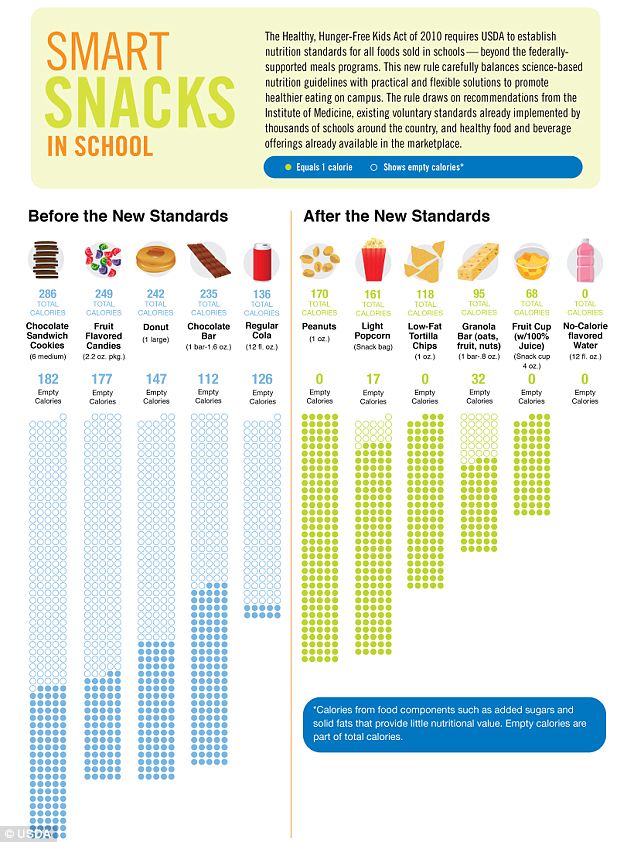 Vegetable oil is used as a salad dressing. The use of sour cream and mayonnaise for dressing salads is not allowed.
Vegetable oil is used as a salad dressing. The use of sour cream and mayonnaise for dressing salads is not allowed.
- Fruits, including citrus fruits, are thoroughly washed in the conditions of the primary vegetable processing shop (vegetable shop), and then again in the cold shop in washing baths.
- Ryazhenka, yogurt and other fermented milk products are poured in portions into cups directly from bags or bottles before they are distributed.
When preparing the menu , very important conditions are taken into account - the maximum variety of dishes with the obligatory introduction of all food groups into it, including meat, fish, dairy products, fresh fruits and vegetables in their natural form, in the form of salads, etc. , as well as the exclusion of the frequent repetition of dishes during the validity of the menu. Nutrition should meet the physiological needs of children for basic nutrients and energy (see table).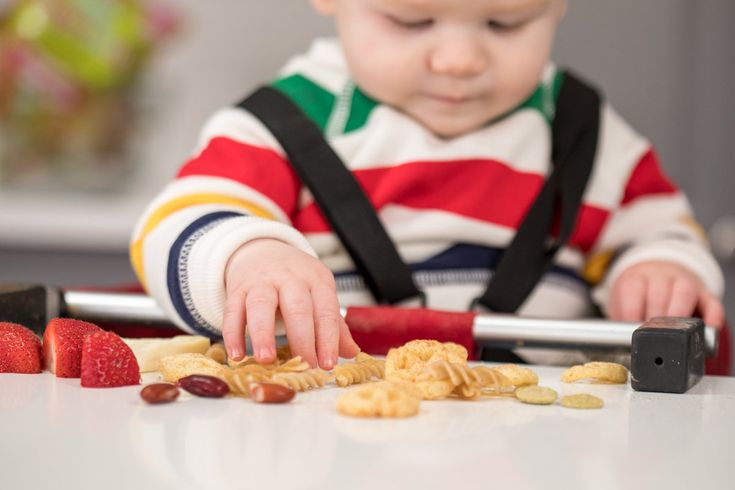
Norms of physiological needs of children in nutrients and energy (per day)
| B age of children | Daily requirement | Energy requirement (in kcal) | Proteins in grams | Fat in grams | Carbohydrates in grams | |
| total | Incl. animal | |||||
| 2-7 years | 75% of normal | 1350 | 40.5 | 24. 3 3 | 45 | 195.75 |
All meals are homemade; are prepared in accordance with technological maps, sanitary standards.
Appendix N 13
to SanPiN 2.4.1.3049-13
The total volume of food meals (in grams)
| Age of children | Breakfast | Lunch | Snack | Dinner |
| 2-7 years old | 400-550 | 600-800 | 250-350 | 450-600 |
Distribution of the total calorie content of the daily diet of children depending on the time the child stays in preschool
| Day care for children (12 hours) | Age of children | Energy value (cal) | Proteins in grams | Fat (in grams) | Carbohydrates (in grams) |
| Breakfast - 25% | 2-7 years old | 50 | 13. 5 5 | 15 | 65.25 |
| Lunch - 35% | 30 | 18.9 | 21 | 91.35 | |
| Dinner - 15% | 70 | 8.1 | 9 | 39.15 | |
| Total-75% | 50 | 40.5 | 45 | 195.75 |
When compiling the menu and calculating calories, it is necessary to observe the optimal ratio of nutrients (proteins, fats, carbohydrates), which should be 1:1:4, respectively.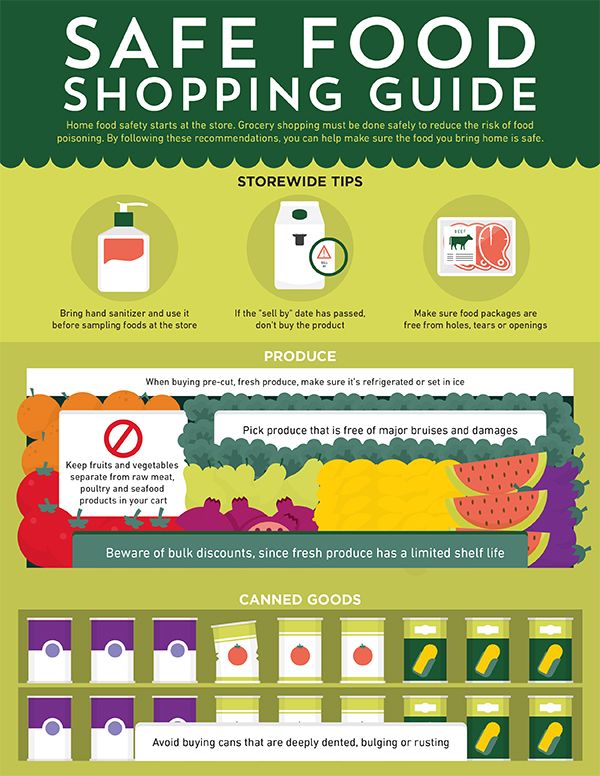
A sample menu should contain information on the quantitative composition of the main nutrients and energy for each dish, meal, for each day and in general for the period of its implementation. Be sure to provide links to the recipes of the dishes and culinary products used, in accordance with the collections of recipes. The names of dishes and culinary products indicated in the approximate cyclic menu must correspond to their names indicated in the recipe books used.
Daily menu includes: milk, sour milk drinks, sour cream, meat, potatoes, vegetables, fruits, juices, bread, cereals, butter and vegetable oil, sugar, salt. Other products (cottage cheese, fish, cheese, eggs and others) 2-3 times a week. Within two weeks, the child should receive all the products in full. In the absence of any products, in order to ensure a complete balanced diet, it is allowed to replace them with products of equal composition. Based on the approved exemplary menu, a menu-requirement of the established sample is compiled daily, indicating the output of dishes for children of different ages. There is a technological map for each dish.
There is a technological map for each dish.
In order to improve vitamin status, normalize metabolism, reduce morbidity, improve the health of the younger generation, in organized children's and adolescent institutions, in accordance with the requirements of regulatory documents (SanPiN 2.4.1.3049-13), year-round or seasonal "C" - vitaminization is carried out .
The calculation of the energy value of the received diet and the content of basic nutrients (proteins, fats and carbohydrates) in it is carried out monthly.
To ensure the continuity of nutrition, parents are informed about the assortment of the child's food by posting the daily menu.
Issuance of ready-made food is allowed only after an acceptance control by a rejection commission consisting of a cook, a representative of the administration, a medical worker. The control results are recorded in a special journal. The mass of portioned dishes must correspond to the output of the dish indicated in the menu.
Immediately after cooking, a daily sample of finished products is taken. The daily sample is taken in volume: portioned dishes - in full; cold appetizers, first courses, side dishes, third and other dishes - at least 100 g. The sample is taken with sterile or boiled spoons into a sterile or boiled glass dish with tight-fitting lids (garnishes and salads - in a separate dish) and stored for at least 48 hours at a temperature of +2 - +6 ° C in a separate refrigerator or in a specially designated place in the refrigerator for dairy products, gastronomy. Dishes with samples are labeled with the indication of the meal and the date of sampling.
Schedule of food
Suppliers
Safety of food products - together
When the patient's immunity is weakened by oncological disease and its treatment, the body is more difficult to cope with bacteria, parasites or viruses that may be contained in food.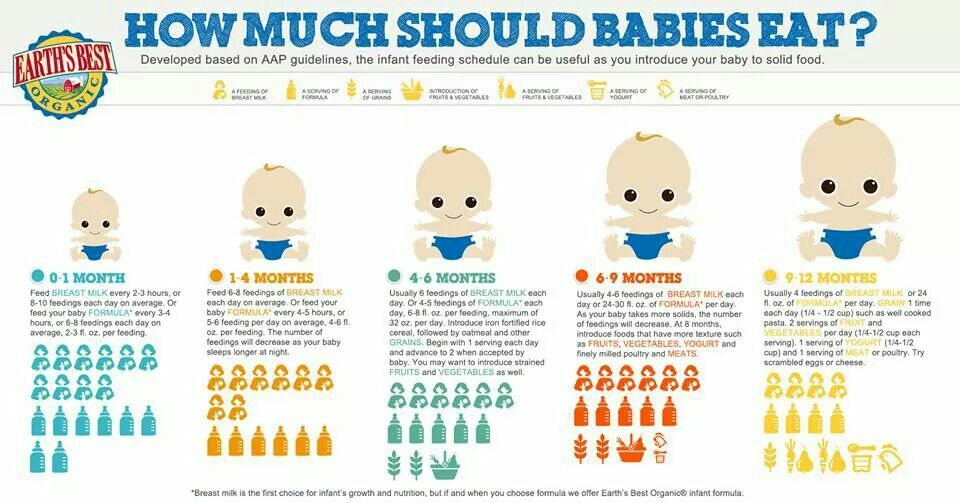 Microorganisms found in food and drink sometimes cause diseases or infections in the gastrointestinal (GI) tract. They are called intestinal infections or food poisoning.
Microorganisms found in food and drink sometimes cause diseases or infections in the gastrointestinal (GI) tract. They are called intestinal infections or food poisoning.
Signs of an intestinal infection
Usually, the symptoms of an intestinal infection are similar to indigestion. She is characterized by:
- Diarrhea
- Abdominal pain or cramps
- Nausea and vomiting
- Heat
- Chills
- Headache
- Muscle pain and weakness
Most people begin to feel ill in the first few days after infection. However, sometimes an intestinal infection develops within a few hours, or, conversely, symptoms may not appear for a week or more.
If you suspect an intestinal infection:
- Tell your doctor.
- Drink plenty of fluids.
- If possible, save suspect food and packaging. Doctors may ask them for research.
- If you suspect that poor-quality food was served to you in a restaurant or other public place, contact Rospotrebnadzor by phone at 8-800-555-49-43.
 This will help you prevent poisoning other people.
This will help you prevent poisoning other people.
Always wash your hands before and after preparing food.
Prevention of intestinal infections
Compliance with simple rules will help prevent the development of intestinal infection. This is especially important for patients with low immunity. Doctors can tell you about other hygiene rules that you need to follow while preparing and eating food.
Ways to prevent intestinal infections:
- Handle food properly.
- Avoid cross contamination.
- Prepare food thoroughly.
- Consciously approach shopping.
- Take precautions when eating in public places.
Proper food handling
Proper food handling helps reduce the chance of intestinal infection. Often the cause of gastrointestinal disorders is that the products were not washed thoroughly or stored incorrectly.
- Wash hands with warm soapy water.
- Wash your hands both before and after preparing food.

- Always wash your hands before eating.
- Wash your hands both before and after preparing food.
- Maintain the correct temperature.
- Hot food should be hotter than 60°C and cold food colder than 4°C. Do not leave food at room temperature for more than 1 hour.
- Meat, fish or poultry should be thawed in the microwave or refrigerator. Place them on the tray so that the liquid does not spread.
- Thawed food should be used immediately and should not be refrozen.
- Perishable foods should be refrigerated no later than 2 hours after purchase or preparation.
- Wash fruit or vegetables before peeling and cutting.
- Rinse leafy vegetables, one leaf at a time under running water.
- Rinse off dirt with a clean sponge.
- Wash all packaged greens and other prepared foods labeled "washed".
- Do not eat vegetables if they are:
- Muddy or moldy.
- Were pre-cut at the store.
- Additional Rules:
- Wash cans with soap and water before opening.

- Do not eat raw plant sprouts.
- Never taste food with a spoon, fork or spatula, which you will then use again for stirring or layering.
- Discard cracked eggs.
- Do not eat food that looks or smells suspicious.
- Wash cans with soap and water before opening.
Prevention of cross-contamination
Bacteria from raw food can easily spread to other foods and kitchen surfaces. Simple ways to keep your kitchen hygienic:
- Keep dishes, countertops and cutting boards clean.
- Cut each type of food separately with a clean knife.
- Clean tables and kitchen boards with hot soapy water or a fresh solution of 1 part bleach to 10 parts water.
- Use food-grade wet wipes.
- Keep miscellaneous foods separate.
- Keep raw meat in a sealed container or container and keep it away from other cooked foods in the refrigerator.
- Arrange foods on the kitchen counter so that they do not touch.
- Use separate boards for slicing meat, fruits and vegetables.

- When grilling meat, place the cooked pieces on a clean plate.
Thorough cooking
Cooking food, especially meat and poultry, at the right temperature reduces the chance of gastrointestinal upset.
- Use a meat thermometer. Insert the thermometer into the middle of the thickest piece of meat.
- Cook meat at 75°C.
- Cook poultry at 85°C.
- Cook the meat until the pink color disappears.
- Meat juice should be clear.
When cooking in the microwave, make sure that there are no cold areas where live bacteria can remain.
- Turn food over while cooking.
- Reheat leftovers under a lid or in a plastic bag with a hole for the hot air to escape.
- Stir food frequently.
Conscious shopping
Intestinal infection prevention starts in the store.
- Check expiration date. Don't buy expired items.
- Choose only fresh produce.
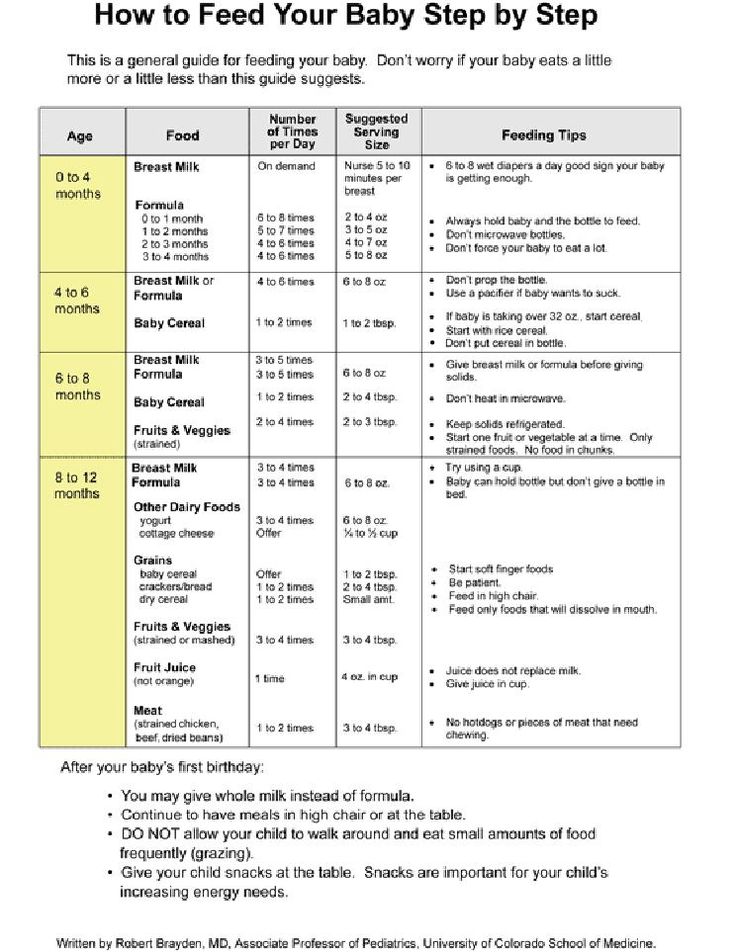 Pay attention to:
Pay attention to: - Packing dates for raw meat, poultry and seafood
- Labeling on fruits and vegetables
- Sealed prepackaged products
- Do not buy or eat:
- Cans in damaged, rusty, swollen or dented cans
- Sliced products
- Unchilled desserts or pastries with whipped cream and custard
- Food in the self-service section or in the cookery
- Soft ice cream or yoghurt ice cream
- Free tasting products
- Broken or unchilled eggs
- Additional shopping tips:
- Frozen and chilled products should be taken immediately before going to the checkout, especially in hot weather.
- Refrigerate food as soon as you return from the store.
Food Safety in Public Places
Eating out often comes with additional challenges because you know less about how the food was prepared and stored. But you can take steps to reduce the risk of gastrointestinal upset when eating in a restaurant.
- Check the rating of the restaurant according to the sanitary inspection. This will help you understand how carefully the restaurant complies with food safety rules and requirements.
- Talk to the waiter. Explain your special needs to him in advance.
- Ask that everything be prepared fresh for you.
- Ask for spices and seasonings to be in separate single packs.
- Drink only pasteurized fruit juices - this reduces the number of bacteria.
- Ask for the meat to be well-done.
- Skip certain foods.
- Avoid eating at cafeterias, salad bars, or buffets.
- Limit your intake of raw fruits and vegetables.
- Do not order fresh juices.
- Additional tips for eating in public places:
- Be sure to place utensils on a napkin, clean tablecloth or coaster, not on the table. Otherwise, ask for new appliances.
- For uneaten food, ask for a package and re-swap it yourself.






